6 best frameworks to build AI agents in 2025
AI is everywhere now - from customer service chatbots to code-writing copilots. But just having powerful AI doesn’t automatically lead to real productivity. Think of it like hiring a team of brilliant interns. They’re eager, sharp, and full of potential...but without clear goals, the right tools, or any context? You get chaos instead of results. That’s exactly the challenge many businesses face today. They’ve invested in cutting-edge models and ambitious ideas. But when it comes to building AI agents that truly work (agents that automate reliably, operate with context, and actually move the needle), something crucial is missing. AI agent frameworks. These frameworks are what give your AI structure. They transform raw intelligence into organized, goal-driven behavior. With the right framework, your AI agents can remember past interactions, use external tools, break down complex tasks, and coordinate with each other. In short, they stop just talking and start getting things done.
In this blog, we’re breaking down everything you need to know about AI agent frameworks in 2025: What they are, what to look for, and the 6 best frameworks to start with today - whether you’re building for customer support, internal workflows, or next-gen productivity. Let’s dive in!
What are AI agent frameworks?
AI agent frameworks are platforms or toolkits that help you build, deploy, and manage intelligent agents without starting from scratch. A typical AI framework includes:
- Planning: How an AI agent understands and performs complex tasks such as dialogue management and other repetitive tasks.
- Memory: Saving past agent interactions and context so the virtual assistants can learn and improve over time.
- Tool usage: Connecting to other services like APIs, databases, and browsers to gather or share information.
- Environment interaction: How agents communicate and act within their virtual environment.
- Agent Orchestration: Organizing and managing multi-agent systems to complete complex tasks smoothly, making sure everyone knows their role and the workflow stays on track.
These AI frameworks save developers a lot of time, standardize how things are done, and make it easier to build intelligent automation that can grow quickly and efficiently.
Core capabilities to look for in an AI agent framework
Whether you’re optimizing customer support with AI assistants that never sleep, streamlining sales outreach using agents that write code and respond to leads in real time, or automating backend workflows that deal with massive data sources and repetitive tasks, the right AI agent can be a total game-changer, especially for sales automation and customer support. When choosing an AI agent framework, look for these key features:
1. Goal Planning & Task Decomposition
The AI system should help custom agents to break big goals into smaller ones and accomplish tasks. For example, if the goal is to handle a customer refund, the agent first verifies the order, then processes the refund, and finally sends a confirmation email.
2. Tool Integration
It should easily connect agents to external tools such as APIs, databases, or web browsers. Think of an agent that can check stock availability by accessing your inventory database or gather real-time data from the web.
3. Long-Term Memory Support
Intelligent automation equips agents with long term memory support AI capabilities. Imagine a support agent that recalls a customer’s previous issues to provide personalized help without asking the repetitive questions.
4. Multi-Agent Collaboration
Multi-agent workflows should allow multiple agents to work together. For instance, one agent handles customer queries while another processes payment, and they coordinate to complete an order seamlessly.
5. Workflow Customization
You want the flexibility to design as per your own processes and modify how agents accomplish complex tasks. Such as customizing an AI sales agent to ask different questions based on the product category or customer type.
6. UI/UX or CLI for Developer Experience
A good AI framework provides an easy way to build and manage agents. Whether through a visual framework for building reliable agents or a command-line interface for developers.
7. Community and Documentation
Strong community support and clear documentation speed up learning and troubleshooting. It’s like having a helpful user manual and experts always ready when you need advice.
6 best AI agent frameworks in 2025
Here is the AI agent frameworks comparison you need to make the right decision:
1. Pydantic AI
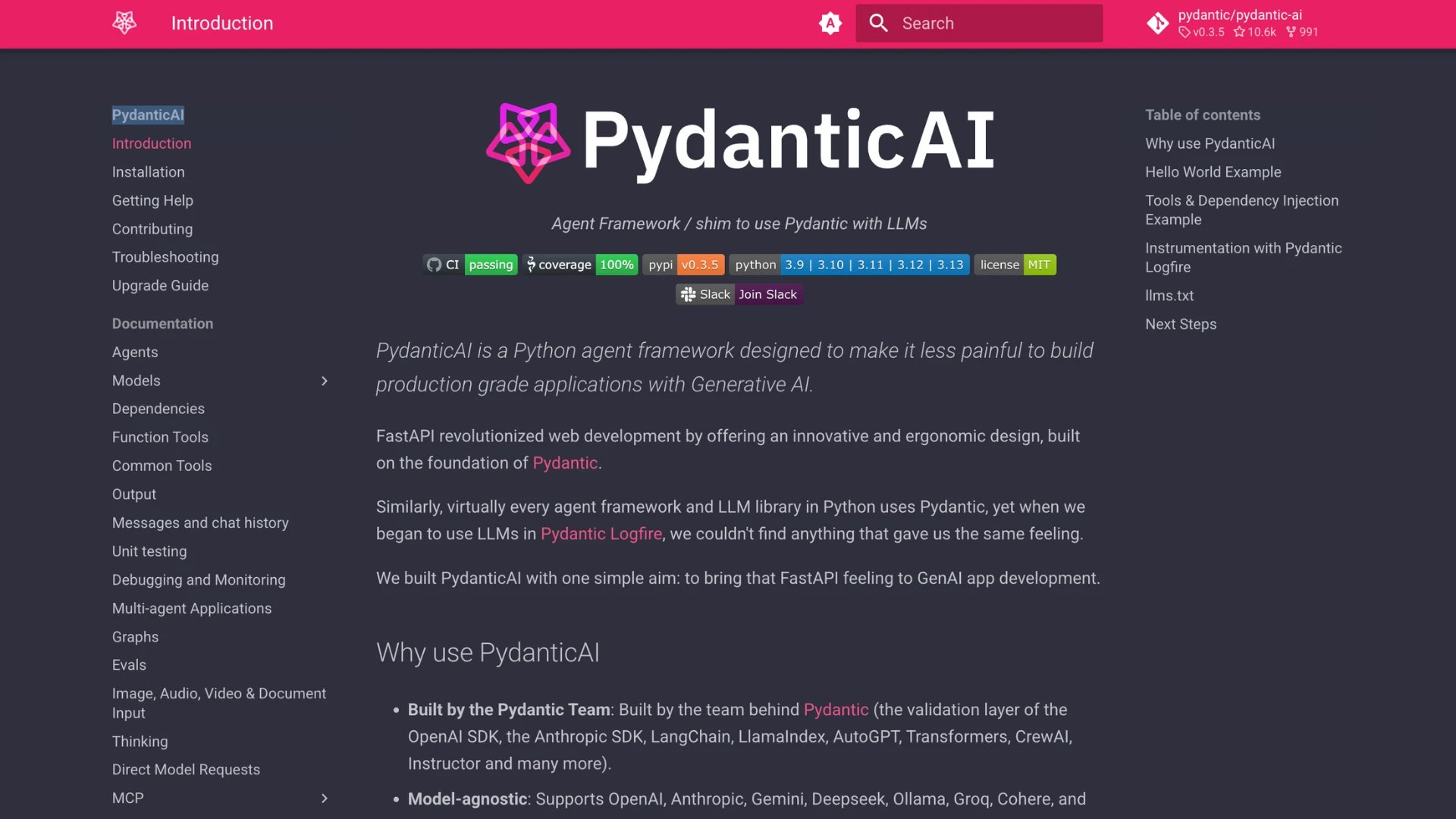
Pydantic AI is the next generation of the popular Pydantic library, now extended with AI capabilities. It’s ideal for developers who want agents to validate data as part of their workflows. Think of it as your AI’s filter that ensures everything it touches is clean, typed, and reliable.
Key Features:
- Schema-first design for agents
- Deep integration with OpenAI models
- Safe data modeling with strong type enforcement
Pros:
- Great for structured, data-heavy workflows
- Ensures precision and control
- Excellent Python ecosystem compatibility
Cons:
- Best suited for developer teams
- Limited visual tools for non-devs
Pricing:
- Free and open-source
2. Langflow
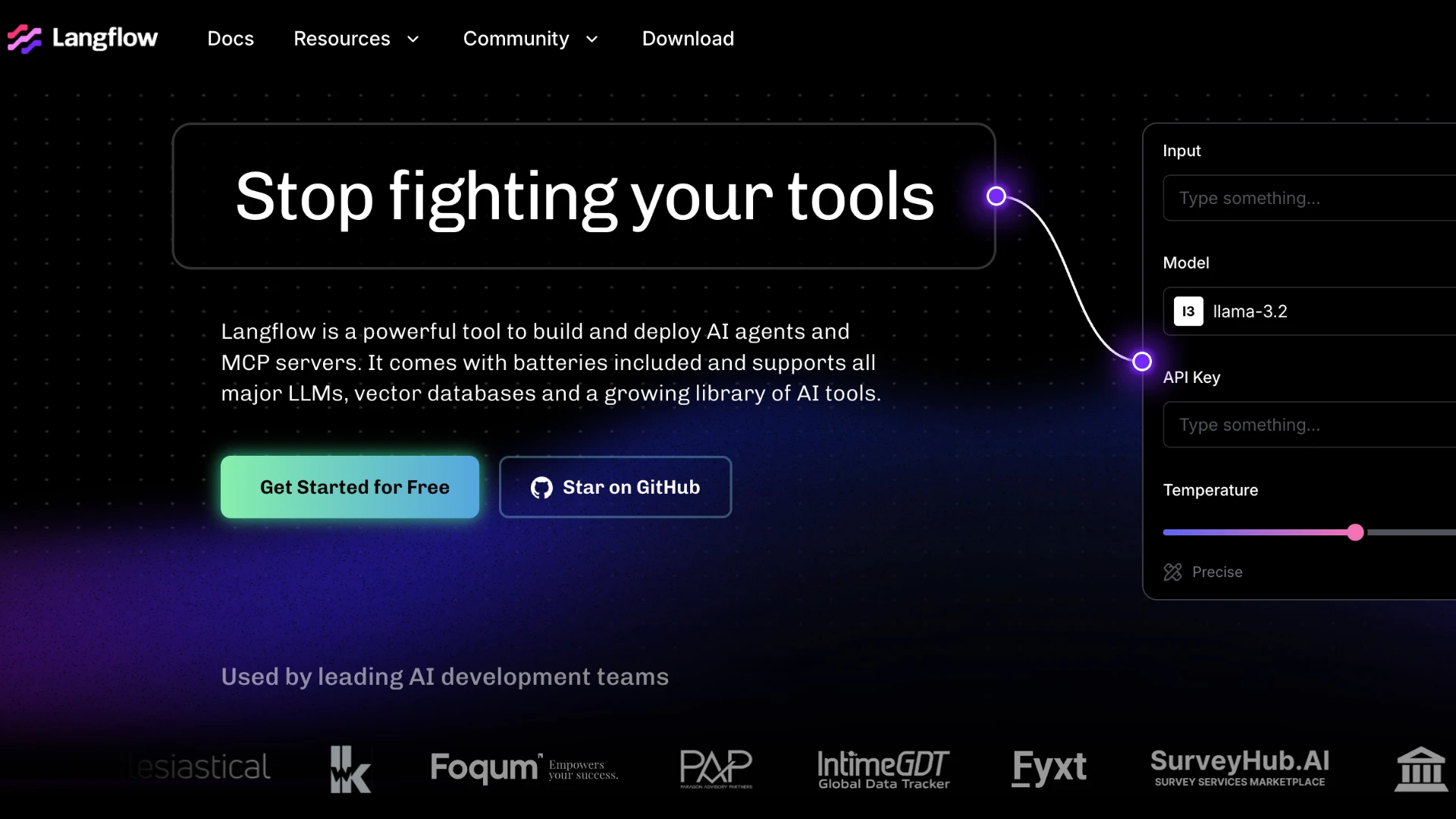
Langflow offers a no-code, visual interface for building LangChain agents. If you’re someone who thinks better with diagrams than with code, Langflow is your friend. Drag-and-drop components, preview agent logic, and deploy with ease.
Key Features:
- Visual flow editor for agent logic
- Real-time preview and testing
- Works with LangChain and Hugging Face
Pros:
- No-code design for fast experimentation
- Great UI/UX
- Active community
Cons:
- Limited backend extensibility
- Not ideal for complex backend integrations
Pricing:
- Free for individual use
- Team plans coming soon
3. Aider
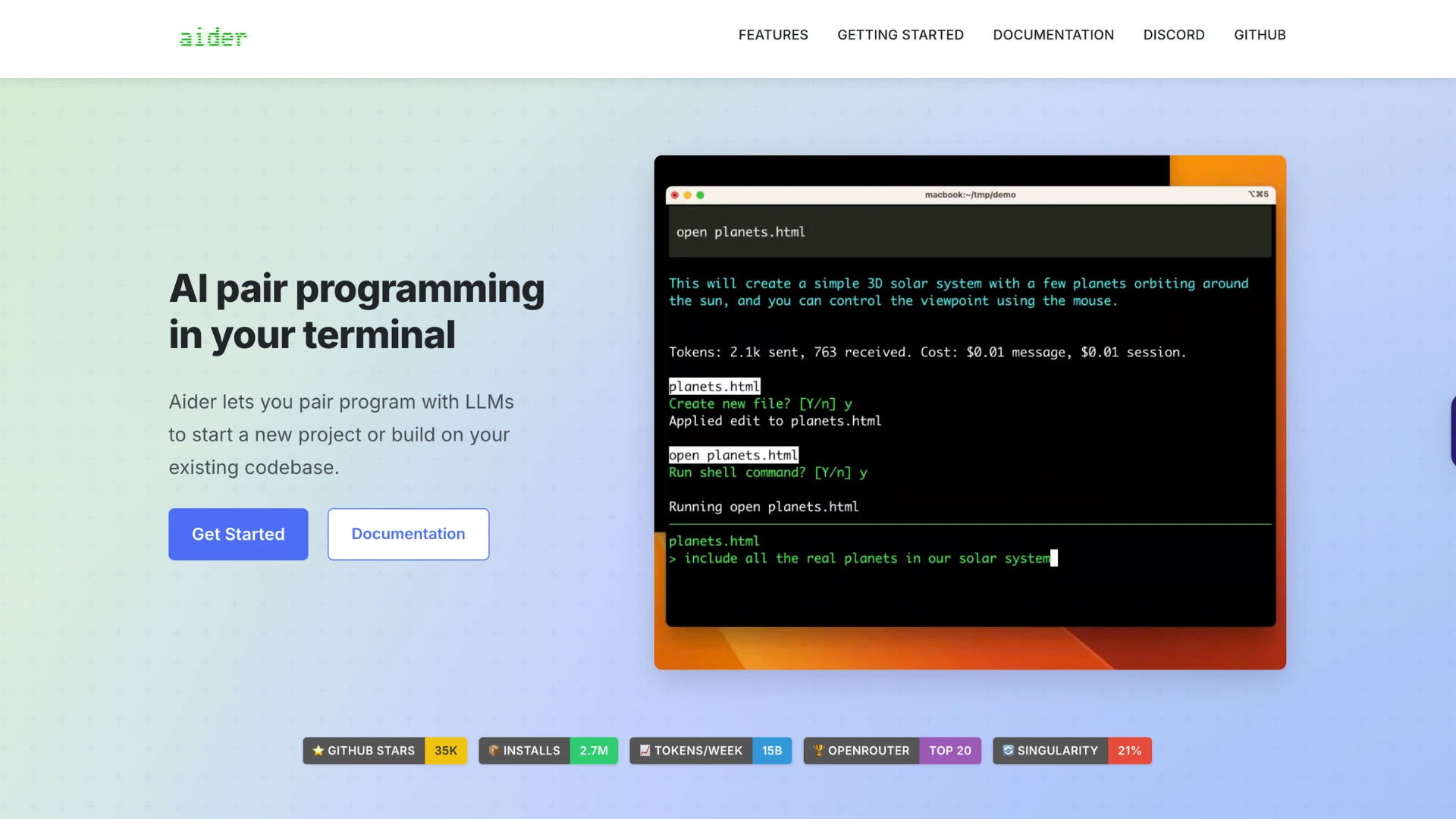
Aider is a command-line tool that brings AI into your terminal and version control. If you live in the world of pull requests and CLI, Aider helps you co-build code with AI in real-time. It’s like pairing with a genius engineer who never sleeps.
Key Features:
- Git-aware AI coding assistant
- Fast CLI-based code generation
- Ideal for pair programming and devops workflows
Pros:
- Lightweight and fast
- Makes code updates directly in your repo
- Doesn’t require setup of external APIs
Cons:
- Not beginner-friendly
- No UI or dashboard
Pricing:
- Free and open-source
4. Cursor
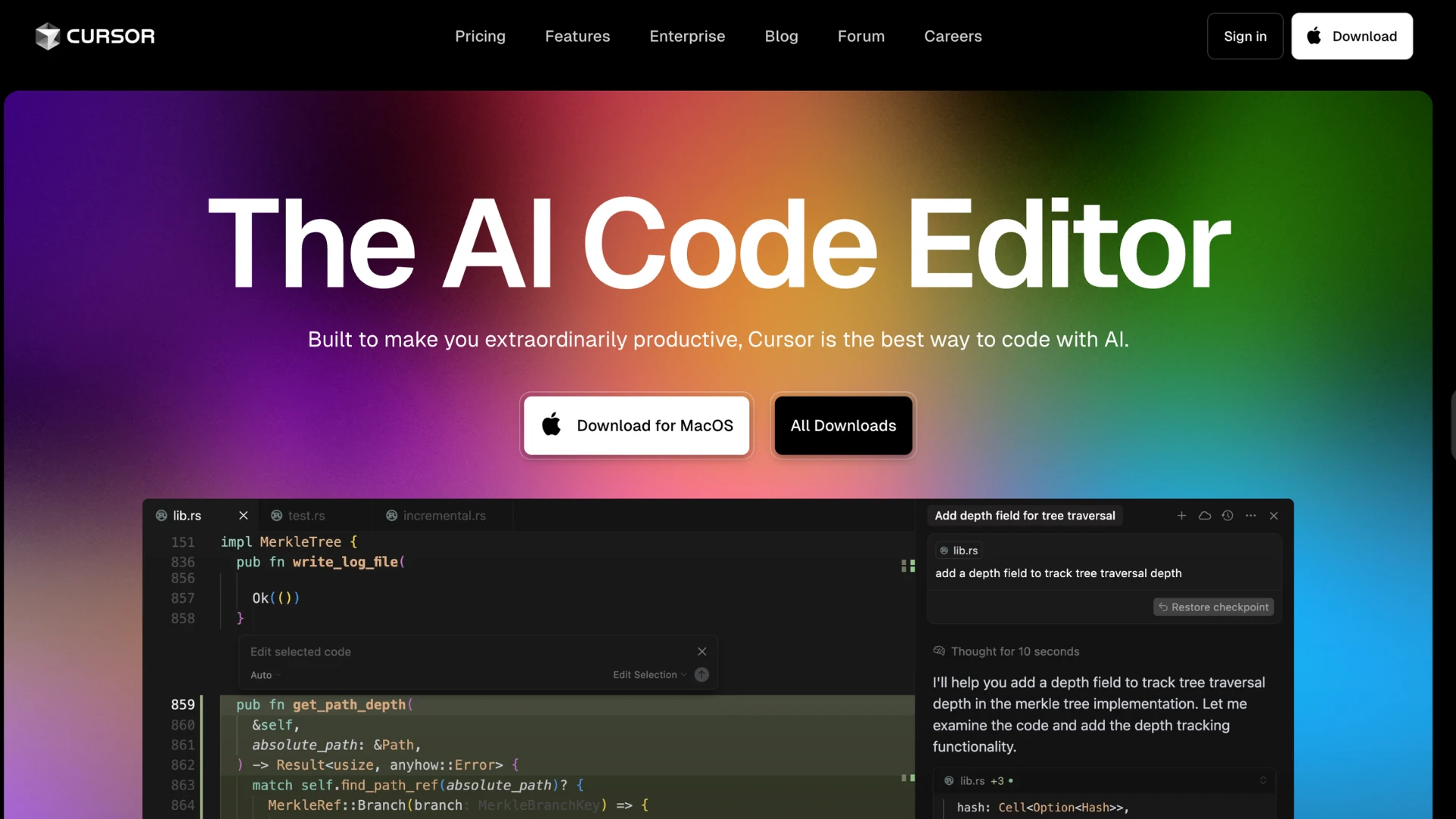
Cursor is a next-gen code editor with native AI agent integration. It’s built on top of VS Code and includes powerful features like inline code suggestions, agent-assisted refactoring, and multi-step planning.
Key Features:
- Built-in chat agents for code navigation
- AI-powered autocomplete
- Supports local and remote models
Pros:
- Seamless developer experience
- Perfect for building tools, scripts, and micro-agents
- Strong focus on software dev workflows
Cons:
- Only available for code-related agents
- Requires installing a new IDE
Pricing:
- Free plan available
- Pro: $20/month for enhanced usage
5. V0 by Vercel and OpenAI
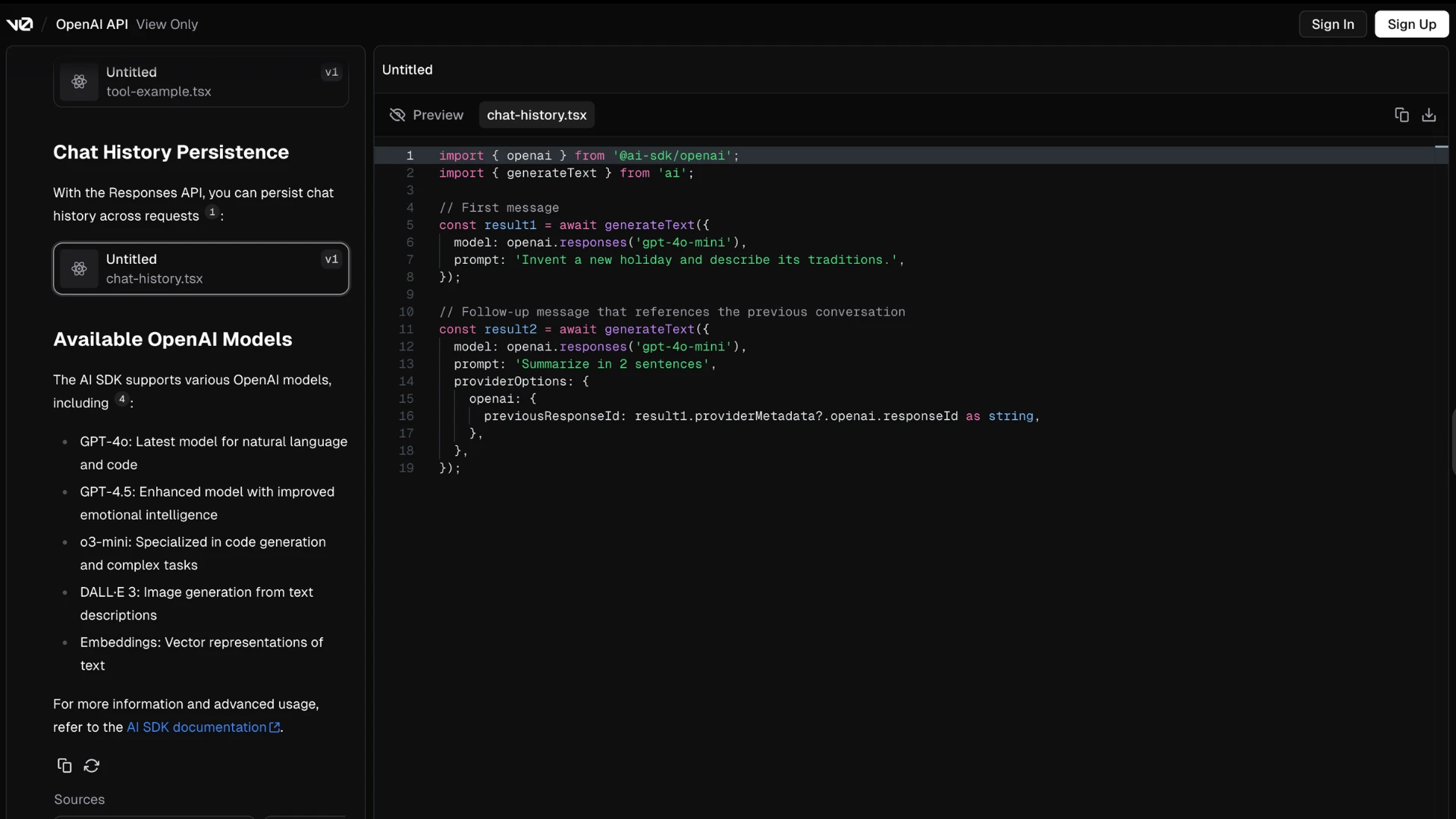
V0.dev by Vercel and OpenAI is an AI framework designed to generate web UIs from simple prompts. You describe what you want, and V0 builds functional components using frameworks like React and Tailwind. It’s great for teams building product interfaces and needing design agents.
Key Features:
- Natural language to UI components
- Clean Tailwind and React output
- Editable preview with live export
Pros:
- Turns prompt into production UI
- Built for product and design teams
- Tight Vercel ecosystem integration
Cons:
- Only for front-end UI workflows
- Early-stage with limited customization
Pricing:
- Free (currently in beta)
6. OpenAI Functions Agents
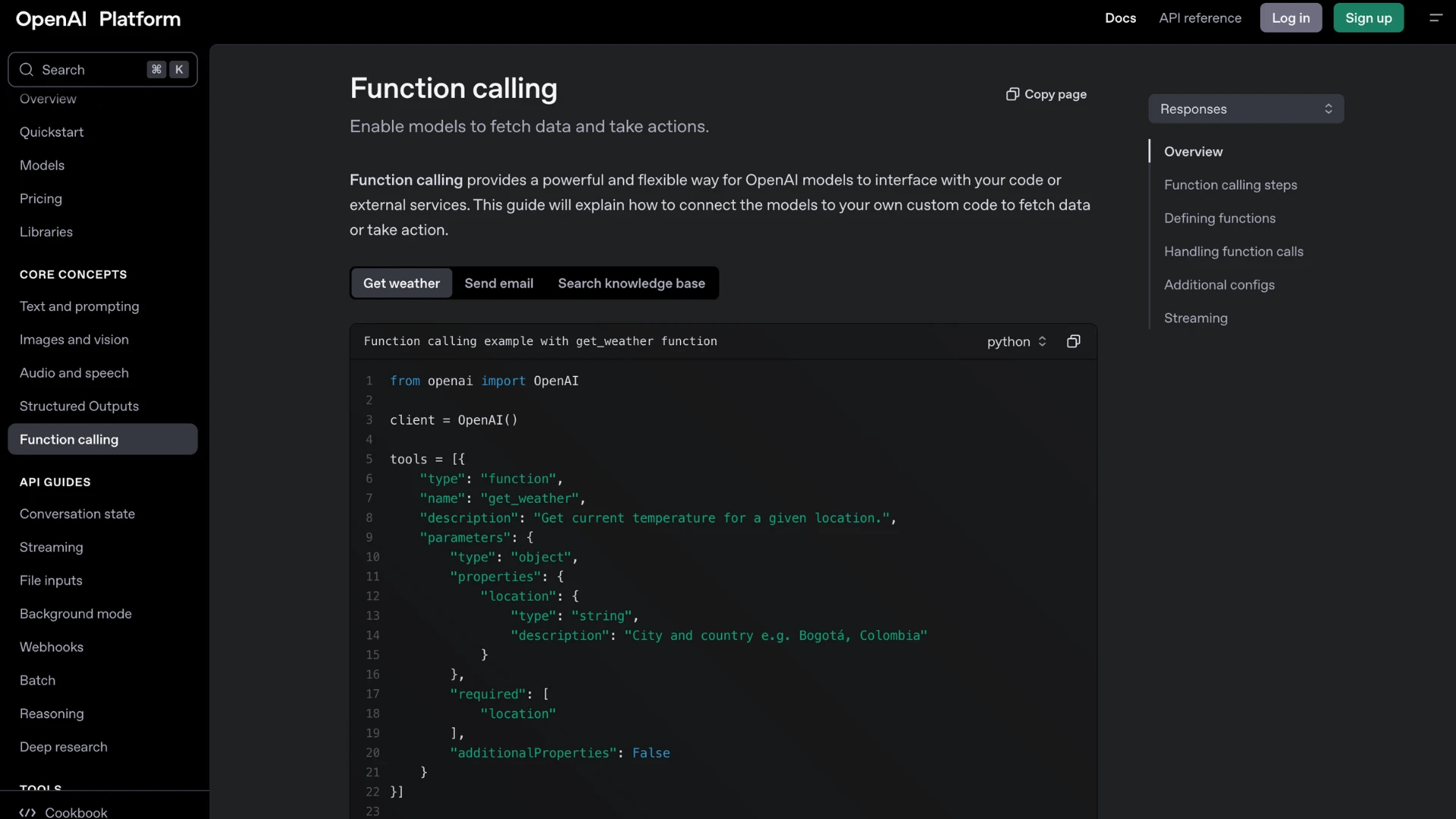
While not a formal framework, OpenAI Function Calling is the base layer powering many agents today. It lets developers teach models to trigger real-world actions through API definitions. With the right orchestration, you can build advanced agents that talk, remember, and act.
Key Features:
- Call APIs via natural language
- JSON schema support for type safety
- Plug into tools like Zapier, databases, and code
Pros:
- Maximum flexibility for agent behavior
- Works across OpenAI’s model ecosystem
- Strong community examples
Cons:
- Requires technical setup
- Not plug-and-play for non-devs
Pricing:
- Based on OpenAI API usage
Common challenges when using agent frameworks
Even the best frameworks come with a few hurdles:
- Prompt Fragility: One poorly worded instruction can throw the whole system off.
- Debugging Multi-Step Tasks: Especially tricky with agents that call multiple tools.
- Resource Usage: Some agents require serious compute, especially with memory or web browsing.
- Performance Oversight: Lack of monitoring tools can lead to runaway costs or mistakes.
- Tooling Gaps: Some frameworks lack UI, memory support, or orchestration logic.
Start building smarter AI agents today
There’s no one-size-fits-all when it comes to building AI agents. If your team is just getting started, platforms like Langflow and V0 are great entry points. For developers wanting control, Cursor and Aider put you in the driver’s seat. And if you need precision with data, Pydantic AI offers unmatched safety. But no matter which tool you choose, building AI agents in 2025 isn’t about choosing a model. It’s about giving that model structure, memory, and the ability to act. Frameworks are how we scale that vision. Choose the one that fits your workflow, your team, and your ambition—and get building.
If you are a developer and still can't find the perfect AI framework for your custom project, watch this video:
Source: YouTube
Need help picking your stack? Partner with experts who specialize in AI Agent Development, custom development, and more. Start today!


.webp)
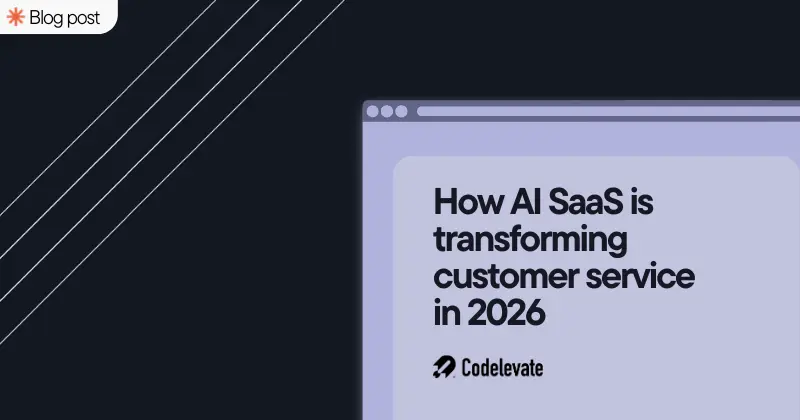

.svg)




